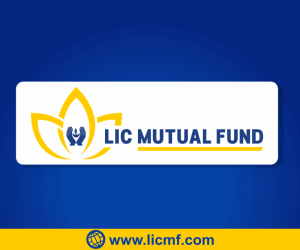Principal Equity Savings Fund: Stability in volatile markets

Right from the beginning of this year, we have been saying through our blog that, the stock market is expected to be volatile in the near term. Stock market volatility, if caused by macroeconomic factors, does not get over in two or three trading sessions – it can persist for many months. It is quite natural for investors, especially new investors, to feel nervous during a volatile market period. There are usually unfounded rumors of an impending bear market, which can spook investors into making wrong investment decisions.
One of the recurring narratives of our blog from the end of last year is the importance of asset allocation in volatile markets. By lowering your exposure to equity through asset allocation, you can bring stability to your portfolio in volatile markets. Equity savings funds have about 30% exposure to active equity (un-hedged equity), with balance exposure is to low risk assets like debt and hedged equity (arbitrage). We think that there is a lack of awareness about these mutual fund products, but equity savings funds can be excellent investment options for investors who want lower portfolio volatility and good post tax returns on their investments on an inflation adjusted basis.
Equity savings funds are very tax efficient because they are treated as equity funds – gross equity exposure (hedged and un-hedged equity) is maintained above 65%. Short term capital gains (investments held for less than 12 months) in equity savings funds are taxed at 15%, while long term capital gains (investments held for more than 12 months) up to Rs 1 Lakh will be tax free. Long term capital gains in excess of Rs 1 Lakh will be taxed at 10%. Dividends paid by equity savings fund is tax free in the hands of the investor, but the AMC will have to pay 10% dividend distribution (DDT) before paying dividends to investors.
One of the major misconceptions about equity savings funds is about their risk return characteristics. Some mutual fund research websites classify equity savings funds along with aggressive balanced funds, because their the gross equity exposure of both the product types exceed 65% - what investors need to understand is that, a major part of the gross equity exposure of equity savings fund, unlike balanced funds, is hedged. Hedged equity exposure is market risk neutral – which means that, there is no impact on price whether the market goes up or down.
To know more about Balanced Funds, read what are Balanced Funds
The higher active equity exposure of balanced funds will cause these funds to outperform in a bull market. Principal Balanced Fund, one of the best performing funds in the last 12 months, most of which were bull market periods, gave more than 18% returns over the period.
Did you know that Principal Balanced Fund is the best balanced fund in the last 3 years
However, over the last 3 months, most balanced funds have given negative returns in the range of -2.5% to -5%. Principal Equity Savings Fund, during this period has fallen by only 0.79%; the volatility is significantly lower than balanced funds during the volatile market period. If volatility persists over the next few months, equity savings funds will continue to outperform balanced funds.
It is unfair to compare, balanced funds (aggressive) with equity savings funds, because the risk returns characteristics are very different as discussed. From a risk profile standpoint, equity savings funds are closer to aggressive monthly income plans than they are to balanced funds. Aggressive monthly income plans, are hybrid debt oriented mutual fund schemes, which usually have 25% to 30% of the portfolio asset allocation in to equity which is high risk and the balance to debt securities which are low risk. Similarly, usually up to 30% of portfolio asset allocation of equity savings fund is to active (un-hedged) equity, while the balance 70% is either to debt or hedged equity, both of which are low risk. For Principal Equity Savings Fund, the asset allocation is shown in the table below:-
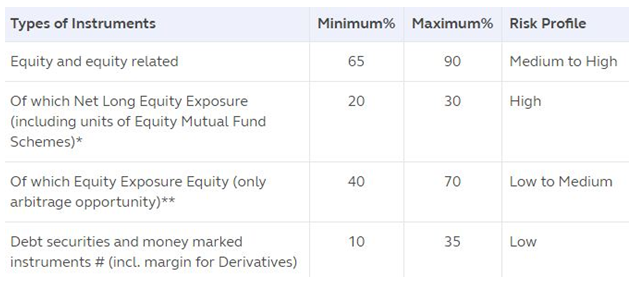
Source: Principal Mutual Fund
Principal Equity Savings Fund was in fact, originally, a monthly income plan – the original scheme name was Principal Debt savings Fund – MIP which was launched in May 2002. In June 2016, Principal Debt savings Fund – MIP was converted to Principal Equity Savings fund. Along with change in scheme name, other scheme characteristics also changed e.g. scheme benchmark, asset allocation, taxation etc. While the risk profile of equity savings funds, including Principal Equity Savings Fund is similar in many respects to monthly income plans, equity savings funds enjoy tax advantage over monthly income plans.
Equity savings funds, as discussed earlier, enjoy equity taxation, while monthly income plans are treated like debt mutual funds. Short term capital gains (investments held for less than 36 months) in debt mutual funds is taxed as per the income tax rate of the investor, while long term capital gains (investments held for more than 36 months) are taxed at 20% after allowing for indexation benefits. In this post, we will discuss various other features of Principal Equity Savings Fund.
Principal Equity Savings Fund
The Principal Equity Savings fund is a conservative equity oriented hybrid fund that seeks to invest in equity / equity related instruments, debt / money market instruments and arbitrage opportunities (completely hedged positions). While the Equity component offers potential capital appreciation, the Debt and Arbitrage components provide stable income while lowering overall fund volatility. Principal Equity Savings Fund enjoys equity taxation (explained earlier in the post). The fund managers of the scheme are P.V.K. Mohan (for the Equity portion) and Pankaj Jain (for Debt portion). The chart below shows the NAV movement of Principal Equity Savings Fund for the last 1 year.
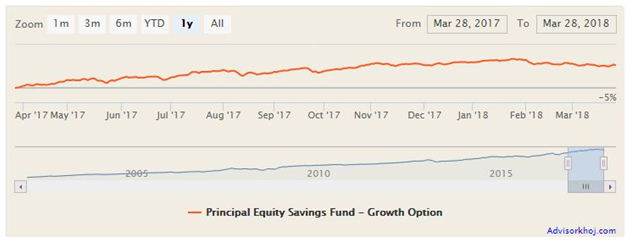
Source: Advisorkhoj Research
Portfolio Strategy
Principal Equity savings Fund is ideal for investors with moderate risk as the fund’s Power of 3 allocations, from the Active Equity component, Debt component and Hedged Equity / Arbitrage component aims to generate consistent income and returns from potential capital appreciation. Let us discuss the fund manager’s strategy of the three different portfolio components.
Active Equity Component:
The active (un-hedged) equity allocation ranges from 20% to 30%. This is the moderate to high risk component, but also has the potential to generate capital appreciation for investors. The equity allocation is dynamically managed based on the overall fund house view of market valuations and related opportunities. We think that, the fund manager employs a conservative approach, which should appeal to investors with moderate risk appetites. The equity portion of Principal Equity Savings Fund has predominantly large cap focus along with few select quality midcaps.
Currently, fund has invested in predominantly large caps with reasonable growth attributes. This equity orientation helps investors earn long run returns from equity related capital appreciation. Further, at this point many large cap stocks have relatively attractive valuations with good growth upside. The Fund endeavors to invest in across sectors, which are not highly correlated, the objective being to maintain reasonable diversification. The portfolio strategy of the equity portion of the fund can be described as 'growth at reasonable price' strategy.
Debt Component:
The debt allocation ranges from 10% to 35% - this will ensure that the fund enjoys equity taxation. The fund’s debt portion runs a conservative debt strategy with a predominant exposure to a diversified basket of higher yield Commercial Papers and Non-Convertible Debentures to maintain an overall portfolio average maturity of around 360 - 400 days. The aim here is to consistently deliver income and steady returns from higher risk adjusted accruals with a lower duration exposure and consequently limited interest rate risk. At the same the fund manager aims to ensure stable quality credit risk while ensuring adequate liquidity while earning good yields.
The fund employs a risk controlled credit process and aims to invest across NCDs, typically 40%- 60% of the Debt allocation and the rest from higher yielding CPs / CDs and money market instruments while targeting a higher gross yield. A portion of the debt component is allocated for margins for cash-future arbitrage trades. The current gross yield of the debt component on February28, 2018 is around 8.49%,with the current allocation to CPs is around 50% and rest in NCDs.
Hedged Equity Component (Arbitrage):
The active (un-hedged) equity allocation ranges from 40% to 70%. It is this component, which makes equity savings funds much less risky or volatile than traditional balanced funds. This portion is completely hedged which makes it market risk neutral, in other words, risk free.
In Advisorkhoj blog, we have often discussed the relationship between risk and return – if hedged equity component of equity savings fund is risk free, does it earn returns? In a perfectly efficient market, a 100% hedged portfolio will not yield any returns, but there are market inefficiencies, which can enable expert investors to earn risk-free profits or in the finance lingo, arbitrage profits.
Arbitrage profit opportunities are difficult to identify and even more difficult to execute in an efficient way by average investors / traders to get meaningful profits; if they were easy to spot and execute by all investors, then arbitrage opportunities would not have existed beyond extremely short periods of time. However, there are arbitrage opportunities in the market and expert fund managers can exploit them. For example, there are cash future arbitrage opportunities. If the futures price (in F&O market) of an underlying stock is trading a significant premium to the spot price (in the Cash market), the fund manager can lock-in arbitrage profits by selling the futures and buying the stock for delivery, knowing that at the expiry of the F&O series, the futures price and spot price will converge and the profit is there for taking without any risk.
The yields from cash-future arbitrage category have generally ranged between 5% - 6% over the past 2 months in line with recent CBLO / Money market yields. On a tax-adjusted basis, these yields are quite attractive. Therefore, yield of arbitrage positions are similar / more attractive than liquid fund yields on a post-tax basis. Historical data shows that, arbitrage yields tend to increase with increasing volatility. The hedged equity (arbitrage) positions helps neutralize market risks while offering arbitrage carry to the fund.
Rolling Returns
The chart below shows the 1 year rolling returns of Principal Equity Savings Fund since 1st July 2016, shortly after the conversion of Principal Debt savings Fund – MIPto Principal Equity Savings Fund.
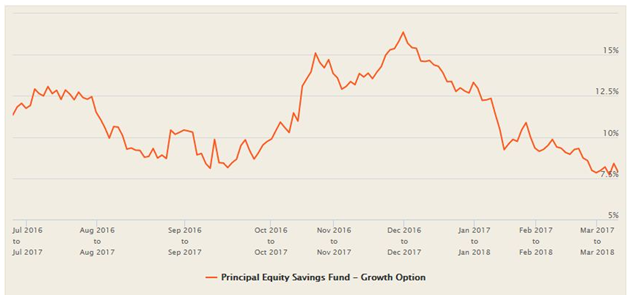
Source: Advisorkhoj Rolling Returns Calculator
You can see that, the 1 year rolling returns of Principal Equity Savings Fund since conversion from the MIP scheme was always above 7.5%. The 1 year rolling returns of the fund was in double digits more than 60% of the times, over the last 20 months of so. While 20 months is a fairly short period of time to evaluate fund performance, the chart below shows that, the fund was able to beat the Equity Savings Fund category (as per Advisorkhoj categorization), for most times over this period.
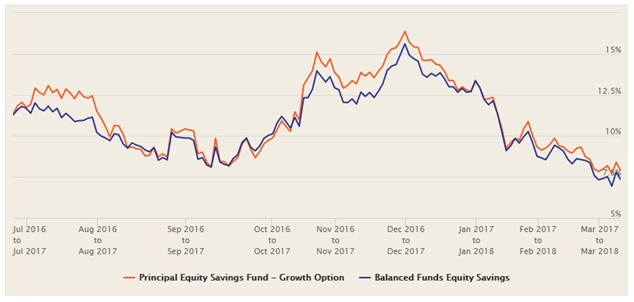
Source: Advisorkhoj Rolling Returns Calculator
The chart above shows that, the fund managers were able to outperform the average product category performance across different market conditions. Equity savings funds, themselves, are a fairly new product innovation in the mutual fund industry, largely as a response to the change in debt fund taxation introduced in first NDA Budget (in 2014). Advisorkhoj will continue to track the performance of this mutual fund product category, including that of Principal Equity Savings Fund with a lot of interest in the future.
Conclusion
As discussed earlier, the stock market has turned volatile over the past few months in 2018 after a strong rally in 2017 leading to high equity valuations. Further higher macro risks emanating from higher expected fiscal deficit, higher current account deficit, and higher oil prices and upside inflation risks have elevated equity market volatility. Equity savings funds are ideal for conservative equity and first time equity investors, as the fund’s “Power of 3 allocations”(Equity, Debt and Cash-future arbitrage component) can generate consistent income and returns from potential capital appreciation. Further with a gross equity exposure higher than 65%, these funds have been able to offer tax advantaged returns. In this backdrop, we believe that Principal Equity Savings Fund is an ideal investment option for conservative equity investors who seek good risk-adjusted returns after taking into consideration tax benefits. Investors should consult with their financial advisors if Principal Equity Savings Fund is suitable for their investment needs.
Mutual Fund Investments are subject to market risk, read all scheme related documents carefully.
Queries
-
What is the benefit of mutual fund STP
Aug 29, 2019
-
How much to invest to meet target amount of Rs 2 Crores
Aug 26, 2019
-
Can I achieve my financial goals with my current mutual fund investments
Aug 24, 2019
-
Can you tell me return of various indices
Aug 19, 2019
-
What would be the post tax return on different investments
Aug 18, 2019
-
Which Principal Mutual Fund scheme will be suitable for my retirement corpus
Aug 16, 2019
-
What is the minimum holding period for availing NCD interest
Aug 4, 2019
Top Performing Mutual Funds
Recommended Reading
Fund News
-
The Wealth Company Mutual Fund launches The Wealth Company Gold ETF FOF
Jan 9, 2026 by Advisorkhoj Team
-
Mahindra Manulife Mutual Fund launches Mahindra Manulife Innovation Opportunities Fund
Jan 9, 2026 by Advisorkhoj Team
-
Jio BlackRock Mutual Fund launches Jio BlackRock Short Duration Fund
Jan 8, 2026 by Advisorkhoj Team
-
Jio BlackRock Mutual Fund launches Jio BlackRock Low Duration Fund
Jan 8, 2026 by Advisorkhoj Team
-
Groww Mutual Fund launches Groww Small Cap Fund
Jan 8, 2026 by Advisorkhoj Team







